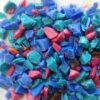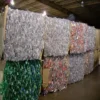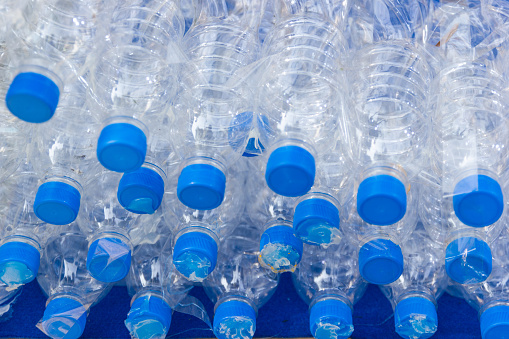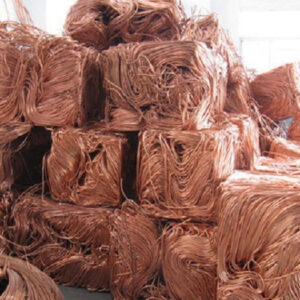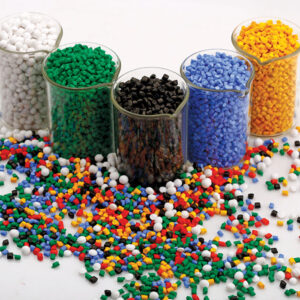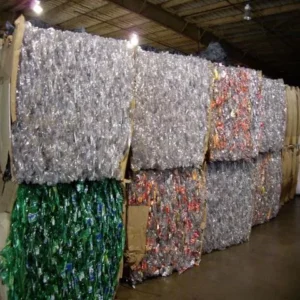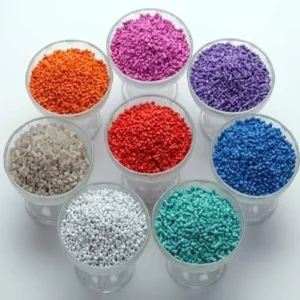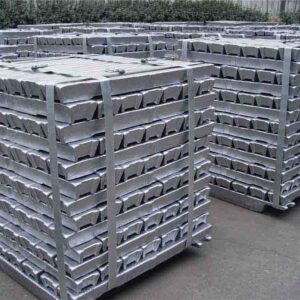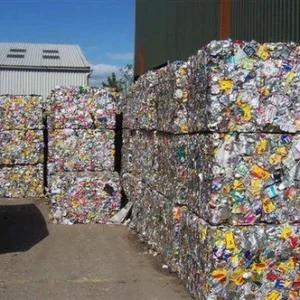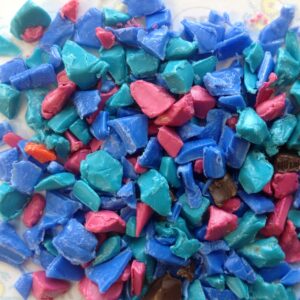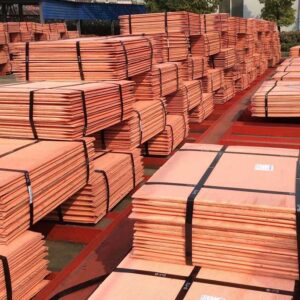A plastic bottle is a bottle constructed from high-density or low density plastic. Plastic bottles are typically used to store liquids such as water, soft drinks, motor oil, cooking oil, medicine, shampoo, milk, and ink. The size ranges from very small bottles to large carboys. Consumer blow molded containers often have integral handles or are shaped to facilitate grasping.
Plastic was invented in the 19th century and was originally used to replace common materials such as ivory, rubber, and shellac. Plastic bottles were first used commercially in 1947, but remained relatively expensive until the early 1950s when high-density polyethylene was introduced. They quickly became popular with both manufacturers and customers because compared to glass bottles, plastic bottles are lighter, cheaper and easier to transport. However, the biggest advantage plastic bottles have over their glass counterparts is their superior resistance to breakage, in both production and transportation. Except for wine and beer, the food industry has largely replaced glass bottles with plastic bottles.
The materials used in the manufacture of plastic bottles vary by application.
Petrochemical resins
High-density polyethylene (HDPE): HDPE is the most widely used resin for plastic bottles. This material is economical, impact resistant, and provides a good moisture barrier. HDPE is compatible with a wide range of products including acids and caustics but is not compatible with solvents. It is supplied in FDA-approved food grade. HDPE is naturally translucent and flexible. The addition of color will make HDPE opaque, but not glossy. HDPE lends itself to silk screen decoration. While HDPE provides good protection at below freezing temperatures, it cannot be used with products filled above 190 °F (88 °C) or products requiring a hermetic (vacuum) seal.
- Fluorine-treated HDPE: These bottles are exposed to fluorine gas in a secondary operation, are similar in appearance to HDPE, and serve as a barrier to hydrocarbons and aromatic solvents. Fluorine-treated bottles may contain insecticides, pesticides, herbicides, photographic chemicals, agricultural chemicals, household and industrial cleaners, electronic chemicals, medical cleaners and solvents, citrus products, d-limonene, flavors, fragrances, essential oils, surfactants, polishes, additives, graffiti cleaning products, pre-emergents, stone and tile care products, waxes, paint thinner, gasoline, biodiesel, xylene, acetone, kerosene and more.
- Low-density polyethylene (LDPE):LDPE is similar in composition to HDPE. It is less rigid and generally less chemically resistant than HDPE, but is more translucent. LDPE is used primarily for squeeze applications. LDPE is significantly more expensive than HDPE.
- Polyethylene terephthalate (PET, PETE) / Polyester: This resin is commonly used for carbonated beverages, water bottles, and food packaging. PET provides very good alcohol and essential oil barrier properties, generally good chemical resistance (although acetones and ketones will attack PET), and a high degree of impact resistance and tensile strength. The orienting process serves to improve gas and moisture barrier properties and impact strength. This material is not resistant at high temperature. Its maximum temperature is 200 °F (93 °C).
- Polycarbonate (PC): PC is a clear plastic used to make bottles for milk and water. Five-gallon water bottles are a common application of PC.
- Polypropylene (PP): PP is used primarily for jars and closures. It is rigid and is a barrier to moisture. Polypropylene is stable at temperatures up to 220 °F (104 °C). It is autoclavable and offers the potential for steam sterilization. The compatibility of PP with high filling temperatures is responsible for its use with hot fill products. PP has excellent chemical resistance, but provides poor impact resistance in cold temperatures.
- Polystyrene (PS): PS is transparent and rigid. It is commonly used with dry products, including vitamins, petroleum jellies, and spices. Polystyrene does not provide good barrier properties, and exhibits poor impact resistance.
- Polyvinyl chloride (PVC): PVC is naturally clear. It has high resistance to oils, and has transmits very little oxygen. It provides a strong barrier to most gases, and its drop-impact resistance is also very good. This material is chemically resistant, but it is vulnerable to some solvents. PVC has poor resistance to high temperatures and will distort at 160 °F (71 °C), making it incompatible with hot-filled products. It has attained notoriety in recent years due to potential health risks.
- Post-consumer resin (PCR): PCR is a blend of reclaimed natural HDPE (primarily from milk and water containers) and virgin resin. The recycled material is cleaned, ground and recompounded into uniform pellets along with prime virgin material especially designed to build up environmental stress crack resistance. PCR has no odor but exhibits a slight yellow tint in its natural state. This tint can be hidden by the addition of color. PCR is easily processed and inexpensive. However, it cannot come into direct contact with food or pharmaceutical products. PCR can be produced in a variety of recycled content percentages up to 100%.
- K-Resin (SBC):SBC is a highly transparent, high-gloss, impact-resistance resin. K-Resin, a styrene derivative, is processed on polyethylene equipment. It is specifically incompatible with fats and unsaturated oils or solvents. This material is frequently used for display and point-of-purchase packaging.
Other Plastic Bottles Materials
- Bioplastic: A bioplastic is a polymer structure based on processed biological materials rather than petrochemicals. Bioplastics are commonly made from renewable sources like starch, vegetable oil, and less commonly, chicken feathers. The idea behind bioplastic is to create a plastic that has the ability to biodegrade.[9]
- Bisphenol A (BPA): BPA is a synthetic compound that serves as a raw material in the manufacturing of such plastics as polycarbonates and epoxy resins. It is commonly found in reusable drink containers, food storage containers, canned foods, children’s toys and cash register receipts. BPA can seep into food or beverages from containers that are made with BPA.
The material is cost-effective, impact-resistant, and compatible with a wide range of chemicals, including acids and caustics (corrosive elements that bind compounds). It has good moisture insulative properties. It is typically offered in FDA-approved food grade. Aromatic hydrocarbons are incompatible with HDPE. It is also suitable for milk bottles and liquid cleaning product bottles. HDPE is naturally transparent and flexible. When color is added to HDPE, it becomes opaque, which adds weight to the bottle and makes it more rigid. While HDPE offers excellent protection at temperatures over the freezing point, it cannot be used with goods that are filled at temperatures above 70 degrees.

